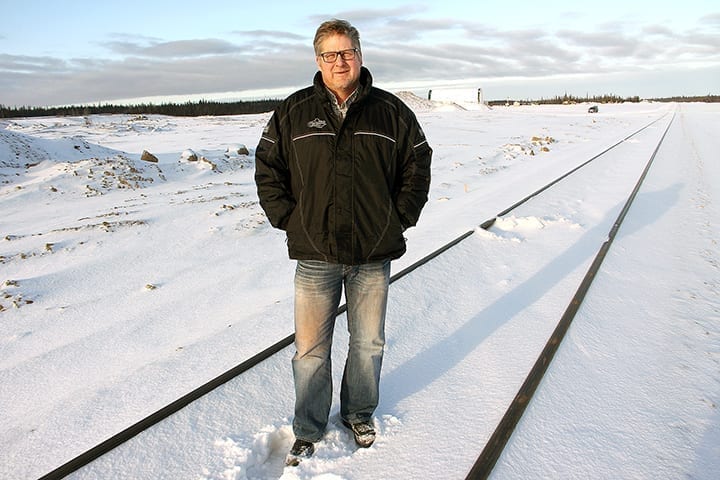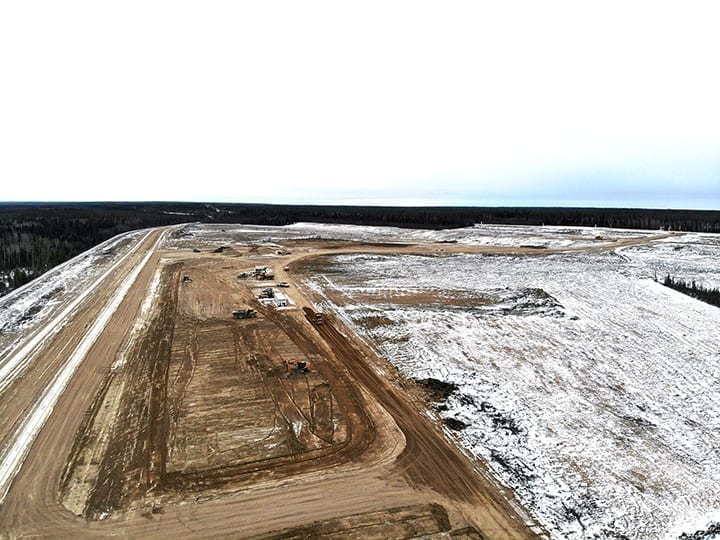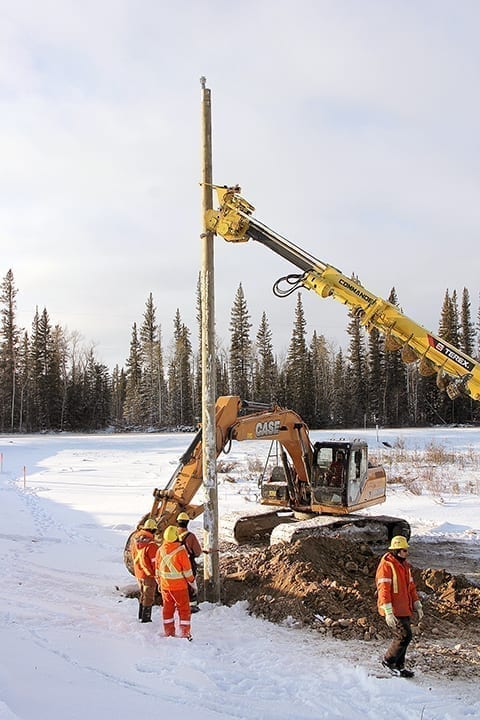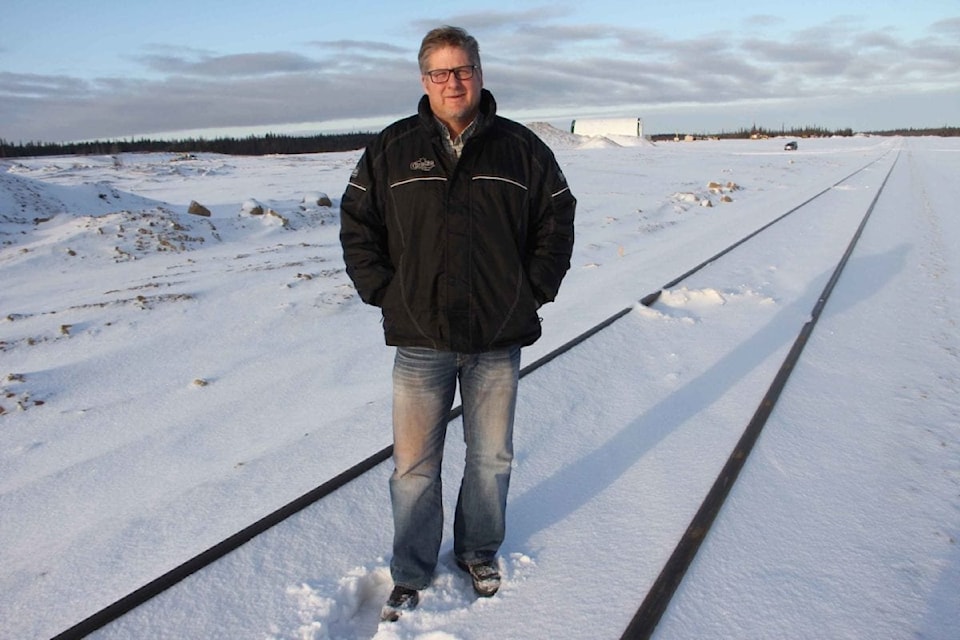After years of work and an investment of over $12 million just so far, Brad Mapes is on the verge of opening the first part of an industrial park in the northwest section of Enterprise, about four kilometres from the residential area of the community.
"After eight long years, our first phase is completed," said Mapes, while taking The Hub on a tour of the project on Nov. 15. "We've completed the logistical part of our site."
In essence, the logistical aspect of the project involves transloading fuel directly from railcars into transport trucks to be mainly taken further north, including to one diamond mine. To accomplish that, over seven kilometres of rail siding was laid earlier this year connecting to the CN rail line passing right by the site.

Paul Bickford/NNSL photo
Mapes said it is expected the transloading operation – called Aurora Logistics – will begin in the first quarter of 2020.
But that is just the beginning of the vision that the entrepreneur has for the 320-hectare site.
It is called AWP Industrial Park, with the AWP standing for Aurora Wood Pellets, a proposed mill that has arguably received the most public and media attention.
However, Mapes doesn't think people understand the whole scope of the project.
"This has the opportunity to totally change the economic outlook of the region and the North," he said.
When everything is developed on the site, Mapes said there will probably be eight separate corporations – the logistics operation, a wood pellet mill, a sawmill, greenhouses, a biomass operation and other initiatives.
Mapes plans to announce more details on future developments at the site at a Nov. 27 meeting of the Hay River Chamber of Commerce.
The project is owned by Mapes and his wife, Colette, except for a five per cent stake held by Joe Handley, a former premier of the NWT.
Mapes' goal has always been to create around 300 jobs at the site.
"And I still think that that's a very conservative number," he said.

Nov. 15. Photo courtesy of Brad Mapes
Mapes admitted it's a relief to see the first section of the project about to begin, noting it was tough to be constantly asked by people if the project was ever going to get going.
"And that was steady," he said. "Now you can see that it's moving. And we want to keep it moving."
Some people also suggested that a big corporation would have gotten the project done a lot faster, he noted. "But at the end of the day, I believe what I bring to the table is I've got that community tie."
The well-known Hay River businessman, and a former mayor of the community, talks about helping young people find jobs in the North.
"There's a need for our students to find reasons why you want to stay in the North, and this is definitely a reason," he said. "This is a field of opportunities. This is a game-changer."
Mapes also specifically described the transloading operation as a game-changer, and touted its numerous benefits, such as cost savings and cuts to greenhouse gas emissions.
Under a long-term agreement with Mapes, Parkland Fuel Corporation of Alberta will operate the transloading services. The fuel will be delivered via the CN rail line, and Hay River's Bassett Petroleum will handle offloading the fuel into trucks of various companies.
To begin with, the transloading facility will involve fuel, but Mapes is hoping it will eventually expand to commodities such as cement, ammonia nitrate and various mining chemicals, along with containers and large pieces of equipment.

The businessman stressed that using rail to carry fuel north and then transloading it onto trucks is a cost-saver.
"The logistical savings that we offer, it just makes sense to bring it from our site," he said.
Mapes added that the cost savings could create more life for existing mines, and boost proposed mines that are trying to get going.
Some people might wonder why the industrial park was not built in Hay River, he said, explaining it is a 104-km roundtrip from the Enterprise site to fuel offloading facilities in Hay River's Old Town.
"There's definitely logistical cost savings," he said of the Enterprise site.
Mapes also pointed out that transloading is good for the environment, noting that, for every railcar, there are three or four fewer trucks on the highway.
"The biggest thing that we're doing right now is the emissions on rail are about 19 per cent compared to trucking," he said. "So our plan is to take a lot of the trucking that comes up to the North and put it onto rail."
The transloading facility will also mean fewer trucks heading into Hay River.
Aside from the transloading operation, work is also underway at the AWP Industrial Park to prepare for other initiatives.
Perhaps as a sign of things to come, the first power pole was being erected at the site on Nov. 15.
Clearing of land is also underway for a sawmill, wood pellet mill and biomass project, which Mapes predicts will begin construction in the summer at the site.
"I'm pretty confident that we'll develop all of it except for about 85 hectares that we'll be able to designate as green areas," he said, noting that may include some farming.
The industrial park will not be an eyesore, he added. "That site is going to be the cleanest industrial site that you ever see."
In the next several years, Mapes expects that the capital investment in the site will total $85-$90 million, including the $12 million spent so far.
"There's never been any government money put into our project," Mapes noted, adding he obtained financing from the Business Development Bank of Canada and a "good chunk" of the initiative was personally bankrolled.
